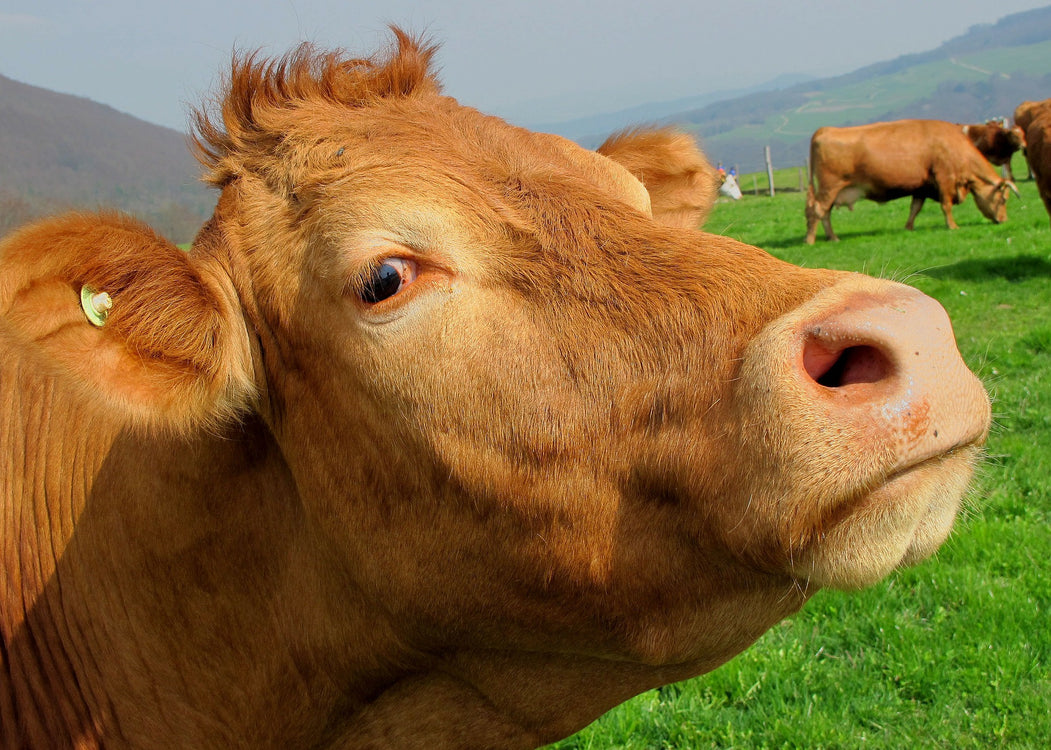
Raw Milk
"Pasteurized milk from confinement dairies can cause much sickness and many lives." states Dr. Don Schmid in his book, The Untold Story of Milk, Green Pastures, Contented Cows and Raw Dairy Foods. Raw milk from pasture fed goats and cows is life giving, healing food. "Raw Milk Cures Many Diseases" an article written in 1929 by the founder of the Mayo Clinic, John E Crewe, M.D. documents raw milk tackling problems of chronic disease such as brain and nerve disorders, asthma, neuralgia, fluid retention, liver disease, heavy metal poisoning, malnutrition, kidney disease, kidney stones, diabetes, gastric disturbances, obesity, colitis, irritable bowel syndrome, poor digestion, diarrhea, constipation and heart disease. There are many healing properties of raw milk. As a secreted substance, the fluid portion of milk is similar to blood serum. Blood is the chief agent of metabolism. The Raw Milk Cure requires a diet of strictly raw milk for a minimum of 4 weeks. This raw milk diet increases blood volume bringing healing to cells, tissues and organs. The Raw Milk Cure was used successfully to treat disease up until the pharmaceutical industry persuaded doctors to use drugs instead of raw milk. Pharmaceutical companies and doctors control drugs. Dr. John E. Crewe stated, "the results (from the raw milk diet) obtained in various types of disease have been so uniformly excellent that one's conception of disease and its alleviation is necessarily changed. The method itself is so simple that it does not greatly interest most doctors." In a short period, raw milk went from medical cure to, in today's conventional medical industry, being discouraged and often condemned. As Upton Sinclair stated, "It is very difficult to get a man to understand something when his salary depends on not understanding it."
Goat's Milk
According to the Journal of American Medicine, "Goats milk is the most complete food known." It contains vitamins, minerals, electrolytes, trace elements, enzymes, protein, and fatty acids utilized by the body with ease. In fact, the body can digest goat's milk in only 20 minutes. having fat molecules one-fifth the size of those in cow's milk makes it easily digestible and tolerable to those with compromised digestive systems. Seventy-two percent of the milk used throughout the world is from goats. Goat milk has no cream separation because of smaller fat molecules. It contains performed Vitamin A in the milk fat that allows it to be readily available for use by the body. Goat milk contains a higher evolved carotene (pro-Vitamin A). Researchers find the pro-Vitamin A to have cancer-preventing properties. The protein in the goat milk forms a softer curd (the term given to the protein clumps that are formed by the action of stomach acid on the protein), which makes the protein more easily and rapidly digestible. Although the mineral content of goat's milk and cow's milk in generally similar, goat's milk contains 13 percent more calcium, 25 percent more vitamin B-6, 47 percent more Vitamin A, 134 percent more potassium, and three times more niacin. It also contains 27 percent more of the antioxidant selenium than cow's milk. Goat's milk has long been used and recommended as an aid in the treatment of ulcers due to its more effective acid buffering capacity. Goat's milk has more buffering capacity than over the counter antacids. (The USDA and Prairie View A&M University in Texas have confirmed that goat's milk has more acid-buffering capacity than cow's milk, soy infant formula, and nonprescription antacid drugs.) Goat's milk alkalinizes the digestive system. It actually contains a group of alkaline minerals, and it does not produce acid in the intestinal system. Goat's milk helps to increase the pH of the blood stream because it is the dairy product highest in the amino acid L-glutamine. L-glutamine is an alkalinizing amino acid, often recommended by nutritionists.
Raw Milk Safety
Many question the safety of raw milk versus pasteurized milk. Todays certified raw milk has stricter standards then pasteurized milk. The bacteria count for the standard plate count for pasteurized milk is 15,000 per ml after pasteurization and 25,000 per ml after pasteurization for cream. Certified raw milk and raw cream standards are 10,000 per ml. There are less bacteria allowed in certified raw milk then pasteurized milk. Which would you choose? Due to the requirements of raw milk certification, today we can get raw milk with less bacteria levels than pasteurized milk without losing nutrients. According to Mark McAfee, founder of Organic Pastures Dairy, which produces a full line of raw organic dairy products for retail sale, "During the period 2000 through 2004 there were several listeria-related food recalls in California associated with pasteurized milk products and ice cream. During this same period more than 12 million servings of Organic Pastures products were consumed and not one person complained of illness and not one pathogen was ever found either by the state, FDA or Organic Pastures." Organic Pastures then hired a laboratory to perform an experiment. The lab added 10 million counts of pathogens to one-milliliter samples of organic raw milk and found that the pathogens not only would not grow but they also died off. The lab concluded: "...raw milk and colostrum do not appear to support the growth of pathogens..."
Bibliography
A CAMPAIGN FOR REAL (RAW) MILK! Web. 18 Apr. 2010. http://www.realmilk.com. Gilbert, Gloria, N.D., D.A. Hom., Ph.D., "Natures Prescription Milk." Web. The Maker's diet, Jordan Rubin - Thorndike Press - Waterville, Me. - 2006 The untold story of milk: green pastures, contented cows and raw dairy foods, Ronald F. Schmid - Sally Fallon - New Trends Pub. - Washington, DC - 2003



Be the first to comment